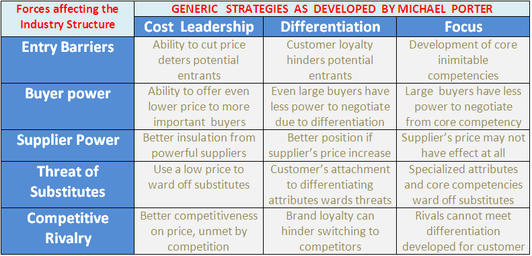Competitive
Advantage - IS A PRODUCT OR SERVICE THAT AN ORGANIZATION’S CUSTOMER PLACE A
GREATER VALUE ON THAN SIMILAR OFFERINGS FROM A COMPETITOR.
First-mover
Advantage – Occurs when an organisation can significantly impact its market share
by being first to market with a competitive advantage
Five Forces Model
BUYER POWER
High when buyer have many choices of whom to buy
Low when buyer have few choices of whom to buy
Buyer power is reduce through loyalty program
High when buyer have many choices of whom to buy
Low when buyer have few choices of whom to buy
Buyer power is reduce through loyalty program
SUPPLIER
POWER
High
when buyers have few choices of whom to buy from.
Low when buyers
have many choices of whom to buy
THREAT OF
SUBSTITUTE PRODUCT OR SERVICES.
High
when many alternatives to a product or services
Low when few
alternatives to a product or services
Switching Cost – costs that can make customers reluctant to switch to another product or services
Switching Cost – costs that can make customers reluctant to switch to another product or services
THREAT OF
NEW ENTRANTS
High
when easy for new competitors to enter a market
Low when hard
for new competitors to enter a market because of entry barriers
RIVALRY
AMONG EXISTENCE COMPETITORS
High
when a competition is fierce in a market
Low when a competition is more complacent
Three Generic Strategies
|
Cost
strategy
|
Low cost high cost
|
|
|
Broad market
|
Cost Leadership
|
Differentation
|
|
Narrow market
|
Focused Strategy
|
|
Value Chain – Porter Five Forces and Three Generic Strategies
